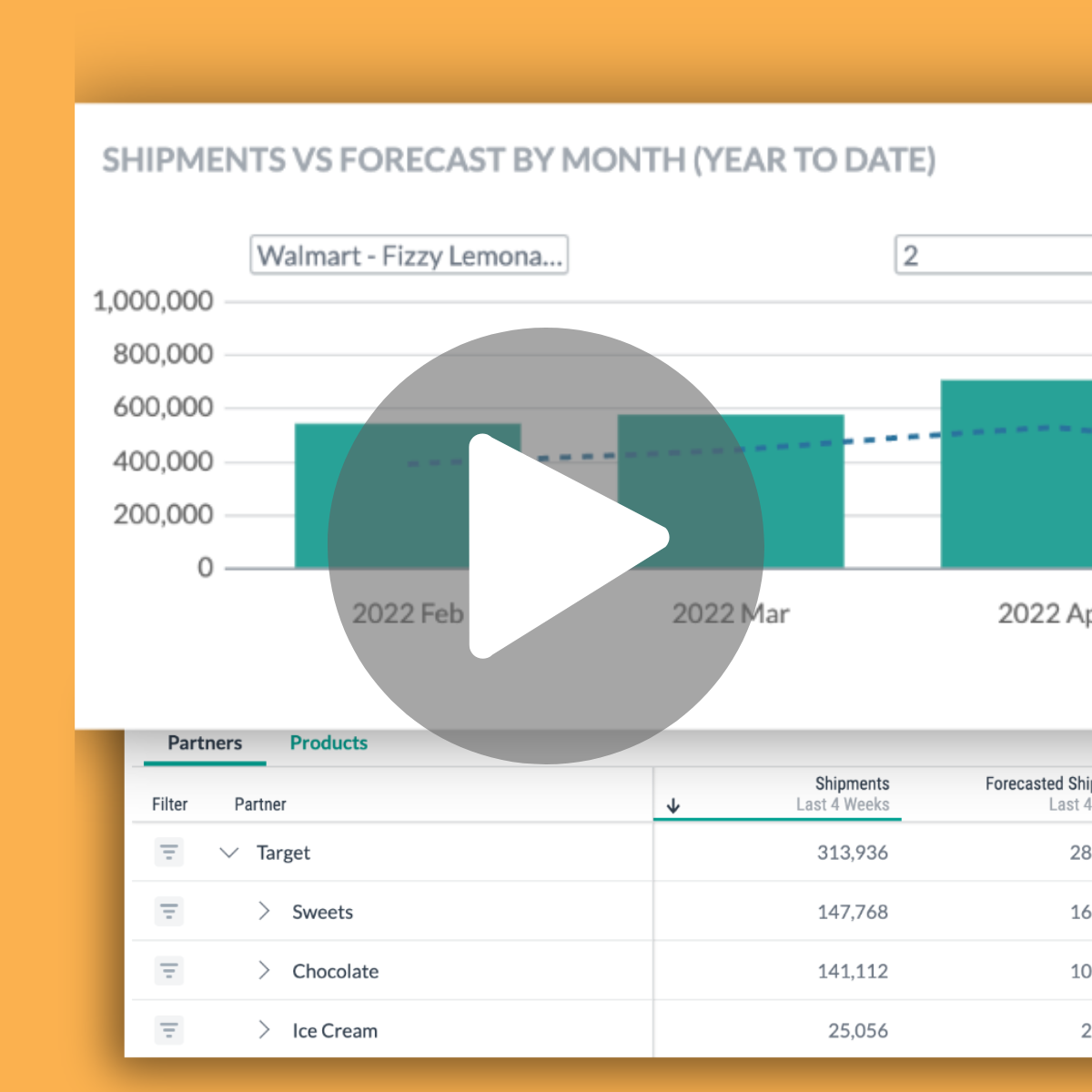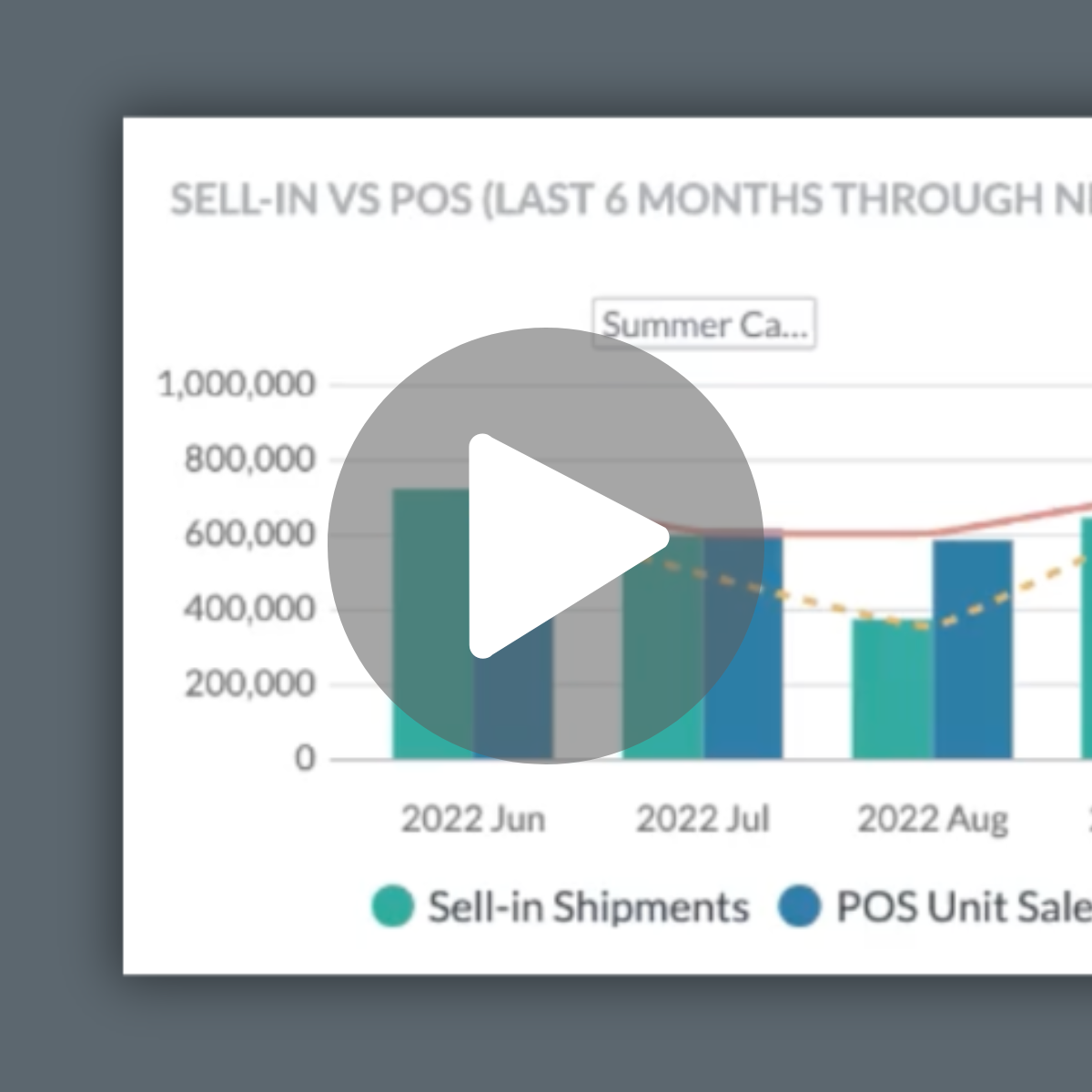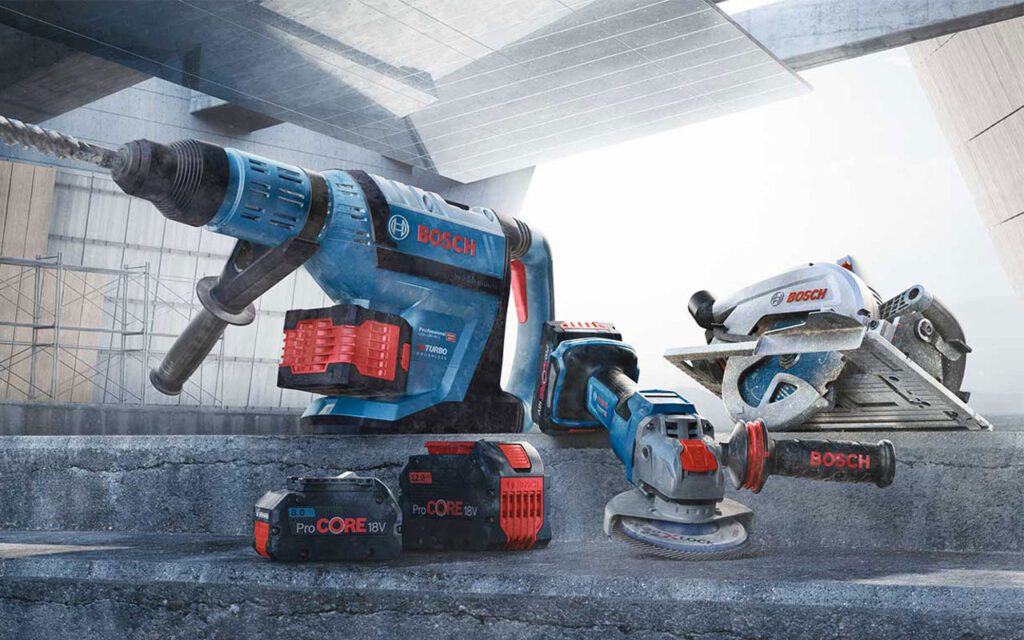What Is Collaborative Planning, Forecasting and Replenishment (CPFR)?
In the consumer goods industry, Collaborative Planning, Forecasting and Replenishment (CPFR) is a supply chain practice in which a manufacturer (supplier) and a retailer — and sometimes distributors or other stakeholders – work together closely to synchronize their operations. They collaborate on key tasks: jointly forecasting product demand, planning inventory flow, and scheduling replenishment deliveries in a coordinated way. The core idea is to replace independent, siloed planning with a single, jointly agreed plan for supply and demand.
CPFR involves open sharing of information (like point-of-sale data, forecasts, on-hand inventory, and upcoming promotions) and continuous communication between the partners. By planning together, the retailer and supplier can better meet customer demand while minimizing costs and inefficiencies across the supply chain.
CPFR emerged in the late 1990s as an evolution of earlier practices like Vendor-Managed Inventory (VMI) and efficient consumer response. The success of such initiatives demonstrated that trust and data sharing between retailer and manufacturer could dramatically improve KPI like in-stock rates and inventory levels. The CPFR framework was soon formalized by industry groups to spread these best practices.
Why does CPFR matter to consumer brands?
Think of supply chain as a partnership between manufacturers and retailers, all designed to serve the end consumer. Traditionally, each party has done its own planning in isolation – the manufacturer forecasts what to produce and ship, the retailer forecasts what to order and stock. This can lead to mismatches known as the bullwhip effect (small changes in consumer demand get amplified upstream, causing swings in inventory). CPFR directly addresses this by aligning plans. This can result in:
- Fewer lost sales due to out-of-stocks: When a retailer and supplier plan together, they are far less likely to have empty shelves. The manufacturer isn’t guessing what the retailer might need – they are actively informed because the supply chain, planning and replenishment teams are working from POS and inventory data in near real-time. Likewise, the retailer isn’t caught off guard by supply issues – they’re aware of the supplier’s production plans and constraints. This mutual insight means products can be replenished just in time to meet actual sales. The result is a significant reduction in stockouts at the store level. On the flip side, it also means avoiding overstock at the retailer. If demand is lower than expected, the partners can slow down shipments. CPFR aims to “have the right product in the right place at the right time” consistently, which boosts sales (by capturing consumer purchases that might otherwise be lost) and customer satisfaction.
- Inventory efficiency and lower costs: Better synchronization allows both parties to hold leaner inventory. In a non-collaborative scenario, a retailer might keep extra safety stock because they’re not sure the supplier’s deliveries will arrive before they run out, and a supplier might keep a buffer in its warehouse because it’s not sure when orders will spike. With CPFR, each side has better visibility. The retailer can comfortably reduce safety stock because they trust the supplier’s replenishment plan, and the supplier can produce closer to actual need because it sees true demand signals (POS data) rather than just periodic orders. This leads to reduced inventory carrying costs and less waste, while still meeting demand. It’s not uncommon for CPFR programs to cut weeks of inventory out of the pipeline, freeing up working capital.
- Improved forecast accuracy: A cornerstone of CPFR is the creation of a single shared forecast that both retailer and supplier commit to. Instead of, say, the retailer forecasting 1000 units for next month and the supplier independently forecasting 800 (or 1200) based on different assumptions, they collaborate and agree on, for example, 950 units as the most likely outcome, with knowledge of promotion plans or trends. Better forecasts mean less last-minute scrambling since production can be smoothed, logistics planned in advance, and fewer surprises in the supply chain. One report from early CPFR adopters cited forecast accuracy improvements of 15-20% in certain cases, which directly drives efficiency.
- Cost reduction through other efficiencies: Transportation can be optimized since shipments are planned, not rushed. Manufacturing can be more efficient if production schedules align with true demand (reducing overtime or costly changeovers caused by unplanned rush orders). Issues are identified earlier – for example, if a supplier foresees a capacity constraint, it can be discussed in the CPFR meeting and the retailer might adjust the promotion timing or the supplier might source from an alternate factory. This proactive approach mitigates the high cost of emergency fixes. Overall, CPFR tends to lower the total supply chain cost to serve while maintaining or improving service levels.
How does CPFR benefit retailers?
CPFR is truly a win-win for both suppliers and retailers. Retailer ssee better sales with a smaller inventory investment, and the suppliers sees more stable orders and higher revenue (thanks to fewer stockouts and lost sales).
Anyone who has worked in the CPG world for a significant amount of time knows that building strong relationships with retailers comes down to trust. CPFR requires and builds a deep relationship. The retailer and manufacturer essentially become allies in planning the business. This can shift the dynamic from adversarial (or purely transactional) to collaborative. With regular communication, joint problem-solving, and shared success metrics, trust is established. For example, instead of the retailer blaming the supplier for a stockout or the supplier blaming the retailer for poor forecasting, under CPFR they both examine the plan vs. actual and figure out what went wrong together. Over time, such collaboration can even extend to joint new product planning, coordinated marketing campaigns, and other strategic initiatives. It’s been noted that CPFR improves KPIs on both sides – meaning the retailer’s goals (sales, service level) and the supplier’s goals (sales, market share, efficiency) are all positively impacted, which reinforces the value of the partnership.
In industries like grocery, where margins are thin, CPFR can be a competitive differentiator, and retailers often favor suppliers who are willing to partner with them in this way.
What is a practical example of how CPFR works?
While different models exist, a common approach (as defined by the Voluntary Interindustry Commerce Standards, VICS, association which formalized CPFR) includes: strategy & planning, demand & supply management, execution, and analysis. Breaking it down:
- Establish collaboration arrangement: The trading partners define how they will work together. This involves setting objectives (e.g., improve in-stock to 98%, reduce inventory by 20%), assigning team members (who from the retailer and who from the supplier will coordinate), and deciding on tools and meeting cadence. They also decide what data to share – for CPFR to work, the retailer typically shares granular store-level or distribution-center-level POS and inventory data, and the supplier shares production and inventory status, among other things.
- Joint business planning: The retailer and manufacturer create a unified plan for a future period (often a year, with detail for each quarter or season). This covers product assortment changes, promotions, new product launches, store expansions/closures, and any events that could impact supply or demand. For example, the retailer might inform the supplier of an upcoming marketing campaign or a seasonal floor reset, and the supplier informs the retailer of any new product introductions or if any product will be discontinued. Agreeing on these events sets a common calendar that will drive the collaborative forecasts.
- Demand forecasting: Based on the joint business plan, the partners collaboratively forecast demand for the products. The retailer may generate a forecast using their systems (often based on POS trends plus adjustments for promotions and events), and using a platform like Alloy.ai a supplier generates its own forecast for the retailer’s needs. Through CPFR, they compare these forecasts and reconcile differences. This could be done at a high level (total units per week) or item by item. Modern CPFR often uses electronic sharing of forecasts (sometimes called a “forecast ladder” or grid that both can view). If the retailer expects to sell 10,000 units of a beverage in March but the supplier’s model predicts only 8,000, they will discuss why – perhaps the retailer has a promotion planned that the supplier underestimated. They then agree on a consensus forecast (e.g., split the difference or lean on one side’s info if more compelling). This forecast typically is for consumer sales (at POS).
- Collaborative replenishment: Translating the demand forecast into an actual order or shipment plan. Here, the focus shifts to how the retailer will replenish stock. Using the consensus forecast as a guide, the retailer’s replenishment team and the supplier’s supply chain team determine the timing and quantity of orders. For instance, they might plan that in week 10, the retailer’s distribution center will need 5,000 units from the supplier to support the forecast sales and maintain safety stock. Unfortunately reality rarely aligns perfectly with plan, so we recommend that suppliers take an “agile” approach to collaborative replenishment.
- Execution of orders and shipments: The supplier manufactures (if needed) and delivers according to the agreed schedule. Both sides execute their part — the supplier readies the product and ships on time; the retailer receives the product and stocks it in stores. If everything was planned well, this execution phase should be smooth – the distribution centers expect the deliveries and the stores get the product in time to avoid shortages.
- Managing by exception: Despite best planning, real life always brings exceptions. CPFR incorporates a process for handling them. This means continuous monitoring of actual sales vs forecast and actual orders/shipments vs plan. If there’s a significant deviation, it triggers an alert. For example, if a certain SKU’s sales are running 30% higher than forecast in the first two weeks of the month (maybe due to an unanticipated trend or a competitor’s product recall), an alert would prompt the teams to meet (or communicate) immediately rather than waiting for month-end. They might agree to expedite an extra replenishment shipment to prevent a stockout. Likewise, if sales are much lower than expected, they might slow down incoming orders to prevent overstock. Exception management is essentially a mini-cycle of CPFR on the fly – and made easy with alerts in software in Alloy.ai.
Alloy.ai Demos for CPFR

(2 min)
Sell-In vs Plan
See how your actual shipments are tracking relative to your sales plan or forecast.

(3 min)
Sell-In vs Sell-Through
Ensure your sell-in and actual POS sales are aligned to avoid problems with stockouts and excess inventory.
- Performance analysis / review: After each cycle or periodically (monthly/quarterly), the partners review how well the collaboration is working. They compare the forecast to actual sales (forecast accuracy), planned orders vs actual orders, fill rates, OTIF delivery, and other KPIs. They identify areas for improvement – perhaps the forecast was off for certain items, or communication broke down regarding a promotion change. These reviews are critical for continuous improvement of the CPFR process. They might discover, for example, that their consensus forecasting method consistently under-forecasted one category of products; knowing that, they can adjust the algorithm or apply a bias correction next time.
Key outcomes and metrics of CPFR
When CPFR is implemented effectively, both the supplier and retailer typically see improvements in various metrics:
- In-stock rate / service level: This is the percentage of time products are available for purchase (not out-of-stock). Through CPFR, it’s common to see in-stock percentages climb toward the high 90s. For example, a retailer might improve from 92% to 98% in-stock on a set of products after a year of CPFR with the supplier. This directly translates to higher sales (every out-of-stock is a missed sale). It also improves the shopper experience, strengthening the retailer’s reputation and the brand’s loyalty.
- Inventory turnover and weeks of supply: With leaner, more accurate planning, the retailer can often reduce the amount of inventory it needs to hold relative to sales. Inventory turnover (annual cost of goods sold divided by average inventory) increases, meaning product flows through faster. A specific metric is days of supply on hand. Suppose before CPFR, a retailer kept 30 days of supply for a certain category, and after CPFR they only need 20 days because the supply is more responsive. That reduction frees up space and capital. The supplier also benefits by not overproducing; their finished goods days-of-inventory can drop, and they can perhaps shift to a make-to-order or make-to-demand approach rather than make-to-stock, at least partially.
- Forecast accuracy: A primary metric internally for both parties is how accurate their demand forecasts become. Under CPFR, joint forecast accuracy (measured by MAPE or forecast error) usually improves significantly. For example, the supplier might track that their forecast for the retailer (which is now a collaborative forecast) was 95% accurate for the month, versus 85% when they forecasted alone. Better accuracy reduces the need for firefighting in the supply chain.
- Order fill rate / OTIF: Because the supplier has better visibility and can plan production and inventory to meet the retailer’s needs, the supplier’s order fill rates (the percentage of the retailer’s orders that are delivered in full) often improve. They can ensure they allocate inventory to this retailer knowing the agreed plan. In turn, the retailer sees the supplier’s OTIF performance improve – fewer short shipments or late deliveries. For instance, a supplier might move from 90% OTIF to 98% OTIF by eliminating surprises and last-minute stock unavailability. This reduces penalty costs (if the retailer had chargebacks for poor OTIF) and improves the relationship.
- POS sales performance: While harder to isolate, many companies have attributed sales lifts to CPFR due to better in-stock and better execution of promotions. If CPFR prevents even a few stockouts during a major promotion, that could be tens or hundreds of thousands of dollars in saved sales that would have been lost. Additionally, by aligning on promotions, they may execute more effective events that drive incremental sales. Some CPFR case studies noted mid-single-digit percentage sales increases in categories where CPFR was adopted because the shelves simply had product more consistently and the right mix of SKUs.
- Collaboration scorecards: Some companies create a CPFR scorecard that tracks the health of the collaboration itself – for example, whether data was shared on time, whether meetings occurred as scheduled, and how many forecast changes were communicated in advance. High scores indicate the process is being followed well. This more qualitative metric ensures the discipline of CPFR doesn’t fade over time.
From a qualitative standpoint, CPFR leads to a shift in mindset — teams start to think beyond their organizational boundaries. A demand planner at the manufacturer starts thinking in terms of the retailer’s store sales, not just “our shipments,” and a buyer at the retailer starts to consider the manufacturer’s production constraints when planning a big promo. This mutual understanding can unlock creative solutions (like modifying a promotion or launching a product in a limited set of stores first to match supply). In the big picture, CPFR is about creating a more responsive and efficient supply chain by leveraging the strengths of each partner. The retailer contributes point-of-sale insights and immediate feedback from the consumer, while the supplier contributes product expertise and production/logistics capabilities. By planning together, they essentially operate as one supply chain, not two. In an age where data sharing and technology are increasingly easy, CPFR has become a practical and increasingly necessary approach for CPG companies and retailers aiming to excel in customer service while controlling costs. Overall, CPFR aligns objectives and synchronizes actions – a powerful combination that helps ensure store shelves are stocked with exactly what shoppers want, no more and no less, and that both the CPG manufacturer and the retailer enjoy profitable, efficient growth as a result.
To read more about CPFR, visit the Institute for Business Forecasting & Planning.

